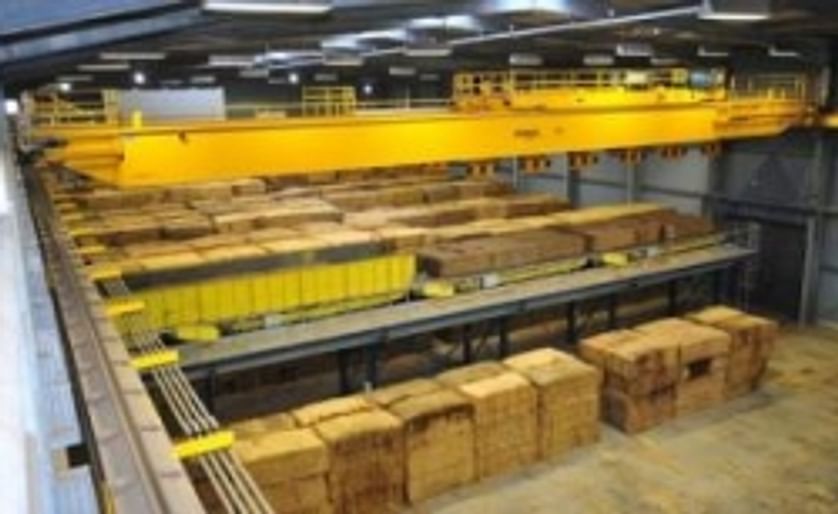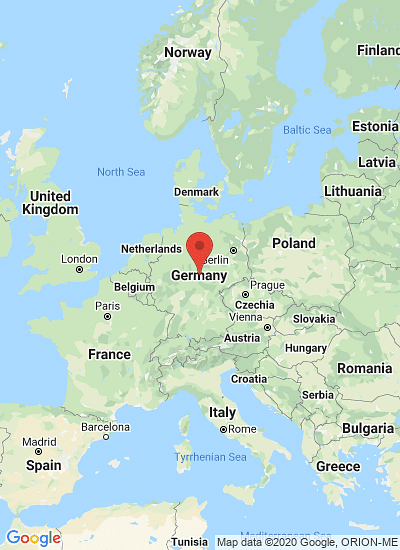Germany's first straw-fired heating plant will soon be commissioned in Emlichheim. Burning approximately 60,000 metric tons of straw per year, it will supply heat to Emsland-Stärke GmbH, public facilities and private households as well.
The boiler of the Emsland Bioenergy Power Plant has been in operation since the summer. However, the plant in Emlichheim is still in trial operation, as the approximately 20 employees of the operator BEKW Bioenergiekraftwerk Emsland continue to fine-tune the complex installation. Soon the plant will be ready and Germany's first straw-fired heating plant will be officially started up.
"We have around 6,000 measuring points in the power plant", says Rainer Knieper, the chief engineer, adding that the installation is being fine-tuned based on the values obtained. "It's like tuning an engine", he explains. One of the results is that the emission threshold values for dust, at 0.1 to 0.6 milligrams per standard cubic meter, lie far below the prescribed maximum value of 20.
The main customers will be Emsland-Stärke GmbH, the district of Emlichheim and the Evangelische Krankenhausverein hospital association. The "green" heat will be used to heat the town hall, the primary school and the school complex, among other places. Approximately 150 households are also already linked up to the power plant's district heating network, which now has a length of around 30 kilometers.
The idea of building a power plant fired exclusively with straw was conceived almost ten years ago, and the commissioning was actually planned for the end of 2012. However, the implementation of the project was repeatedly held up.
Technical and legal framework conditions had to be created and the financing raised.
Although BEKW obtained the construction and operating permit for the straw-fired heating plant at the end of 2008, the construction was only completed in February 2011. Only when straw was "literally" included as a raw material on the list of the Renewable Energies Act in 2009 could the project gain momentum. The initiators were then faced with the task of securing the financing for Germany's first straw-fired heating plant, estimated at €56 million. In September 2010, the operator was promised five million euros of funding by the Federal Ministry for the Environment. A short time later, the state of Lower Saxony provided a state guarantee for the project. How much the construction of the power plant has actually cost in the end will become apparent in the coming weeks. During the construction, the planners carried out modifications in order to optimize the supply to the district heating network.
The fact that boiler output of approximately 50,000 kilowatt hours per year will be achieved based on straw alone as the raw material is a first in Germany, says Knieper. "There are also power plants with such capacity in Denmark, the UK, Spain and other countries," says the engineer. A special characteristic of the German plant is that large bales with different heights can be processed. In the other plants a fixed standard size must be used.
To secure the supply of straw, most of which will come from the Münster and Emsland region, contracts were concluded with suppliers several years ago. "The power plant needs around 60,000 metric tons of straw per year", says Knieper. "That is a football field full of square bales stacked 60 meters high." That means that approximately twelve metric tons of straw will be burned per hour when the plant is running at full capacity. However, most of the time the plant will be run at partial capacity.
Hundreds of square bales are already stacked up in front of the large storage depot. Under the contracts, the power plant was required to accept deliveries already at the end of 2012. Various criteria come into play with regard to the usability of the straw as fuel. Not everything is suitable for use as a raw material for energy production. "We are not a waste incineration plant", Knieper stresses. "Many people might think that you can take the good straw for the animals and simply burn the bad stuff. However, for use as a raw material the straw mustn't be too damp and it must also be tightly bound. Loose straw cannot be used."
However, the straw-burning cycle in Emlichheim does not end with the generation of heat. The "by-product ash" is included in the Fertilizer Regulation as a permissible substance, and the straw-fired heating plant also generates electricity. BEKW is therefore currently working on a concept to market the electricity directly, says engineer Rainer Knieper.






